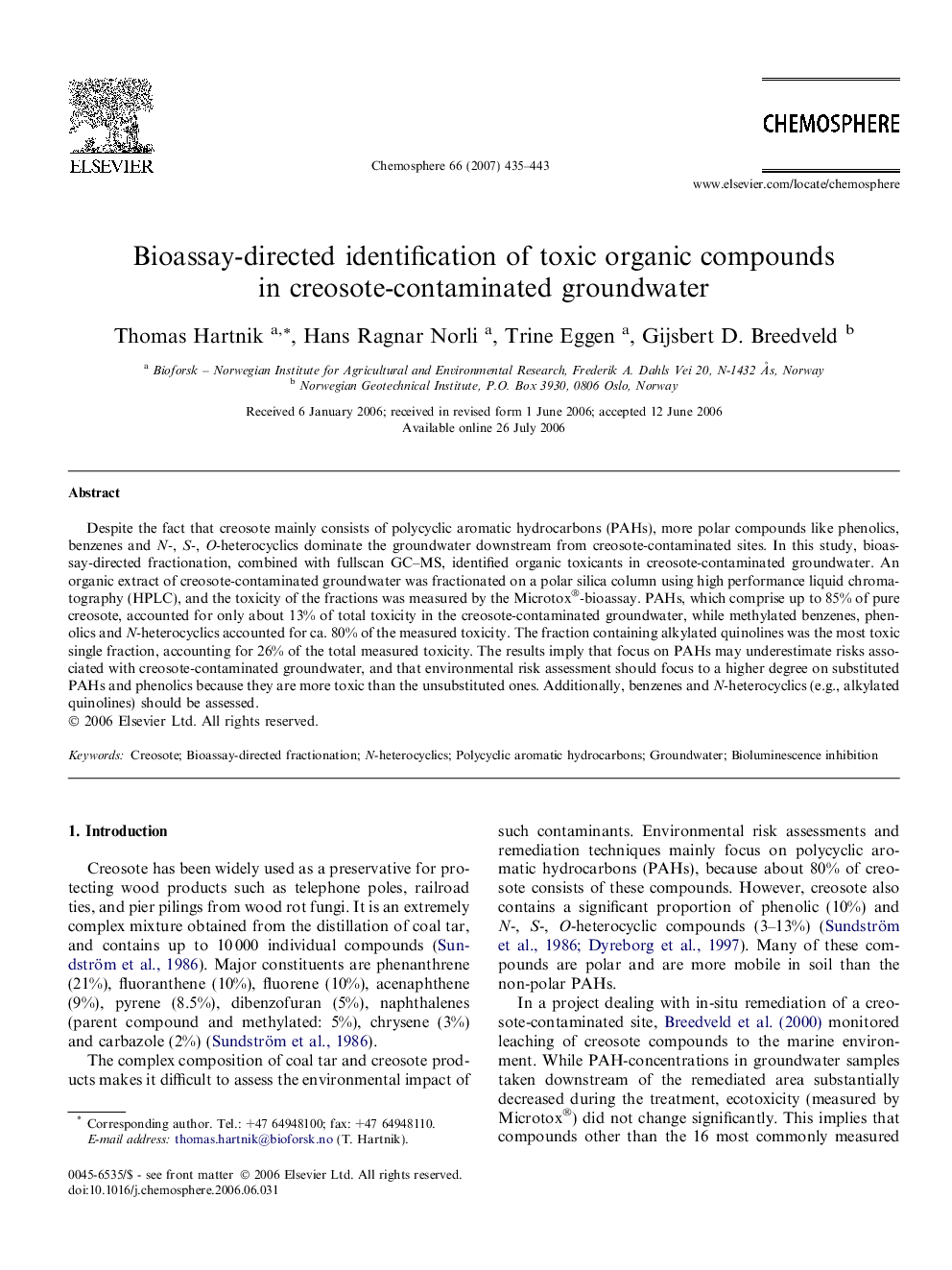| Article ID | Journal | Published Year | Pages | File Type |
|---|---|---|---|---|
| 4416383 | Chemosphere | 2007 | 9 Pages |
Despite the fact that creosote mainly consists of polycyclic aromatic hydrocarbons (PAHs), more polar compounds like phenolics, benzenes and N-, S-, O-heterocyclics dominate the groundwater downstream from creosote-contaminated sites. In this study, bioassay-directed fractionation, combined with fullscan GC–MS, identified organic toxicants in creosote-contaminated groundwater. An organic extract of creosote-contaminated groundwater was fractionated on a polar silica column using high performance liquid chromatography (HPLC), and the toxicity of the fractions was measured by the Microtox®-bioassay. PAHs, which comprise up to 85% of pure creosote, accounted for only about 13% of total toxicity in the creosote-contaminated groundwater, while methylated benzenes, phenolics and N-heterocyclics accounted for ca. 80% of the measured toxicity. The fraction containing alkylated quinolines was the most toxic single fraction, accounting for 26% of the total measured toxicity. The results imply that focus on PAHs may underestimate risks associated with creosote-contaminated groundwater, and that environmental risk assessment should focus to a higher degree on substituted PAHs and phenolics because they are more toxic than the unsubstituted ones. Additionally, benzenes and N-heterocyclics (e.g., alkylated quinolines) should be assessed.
